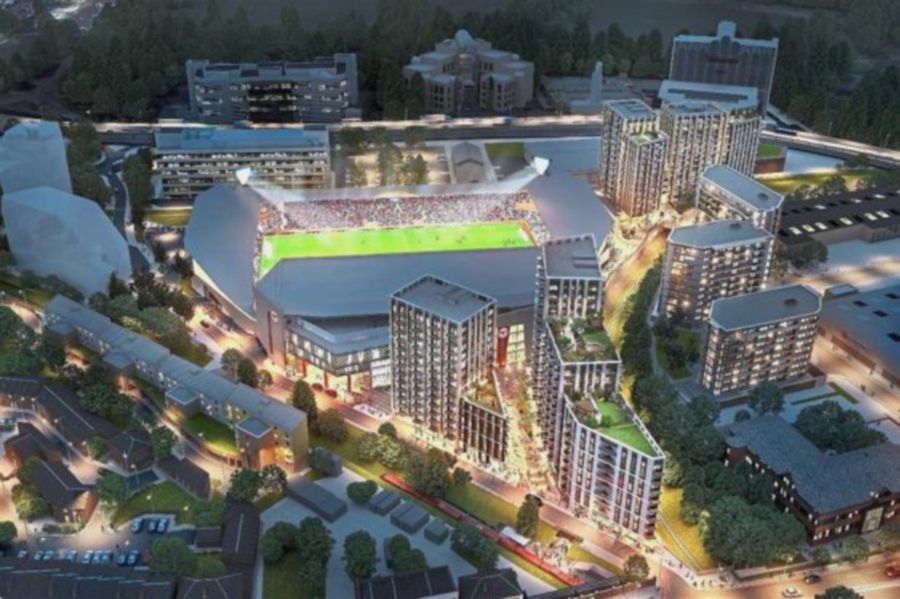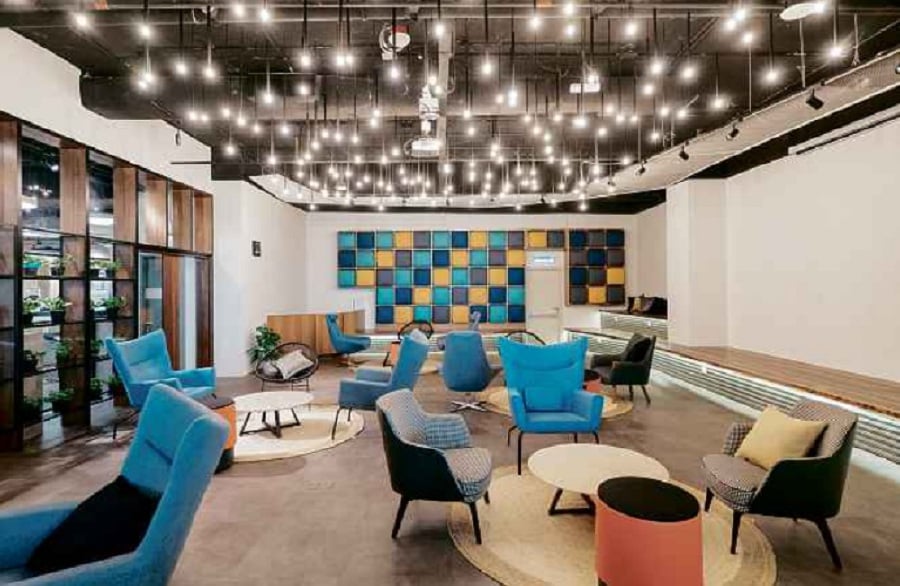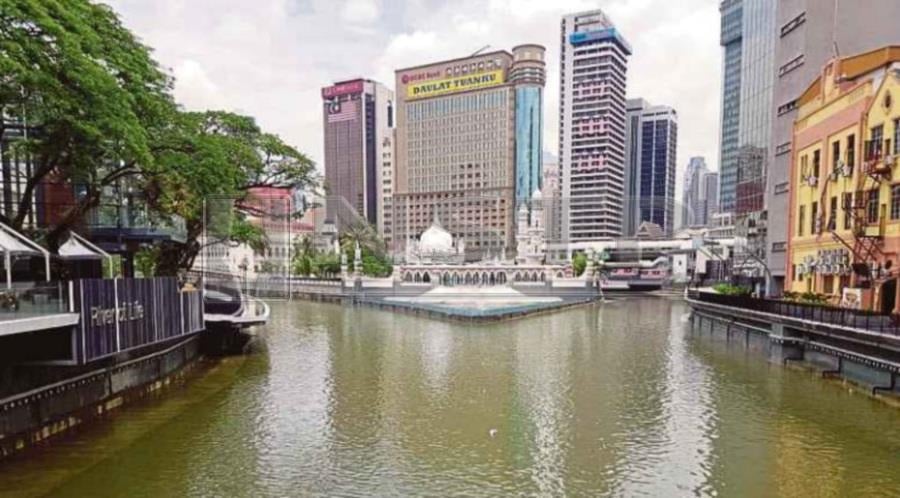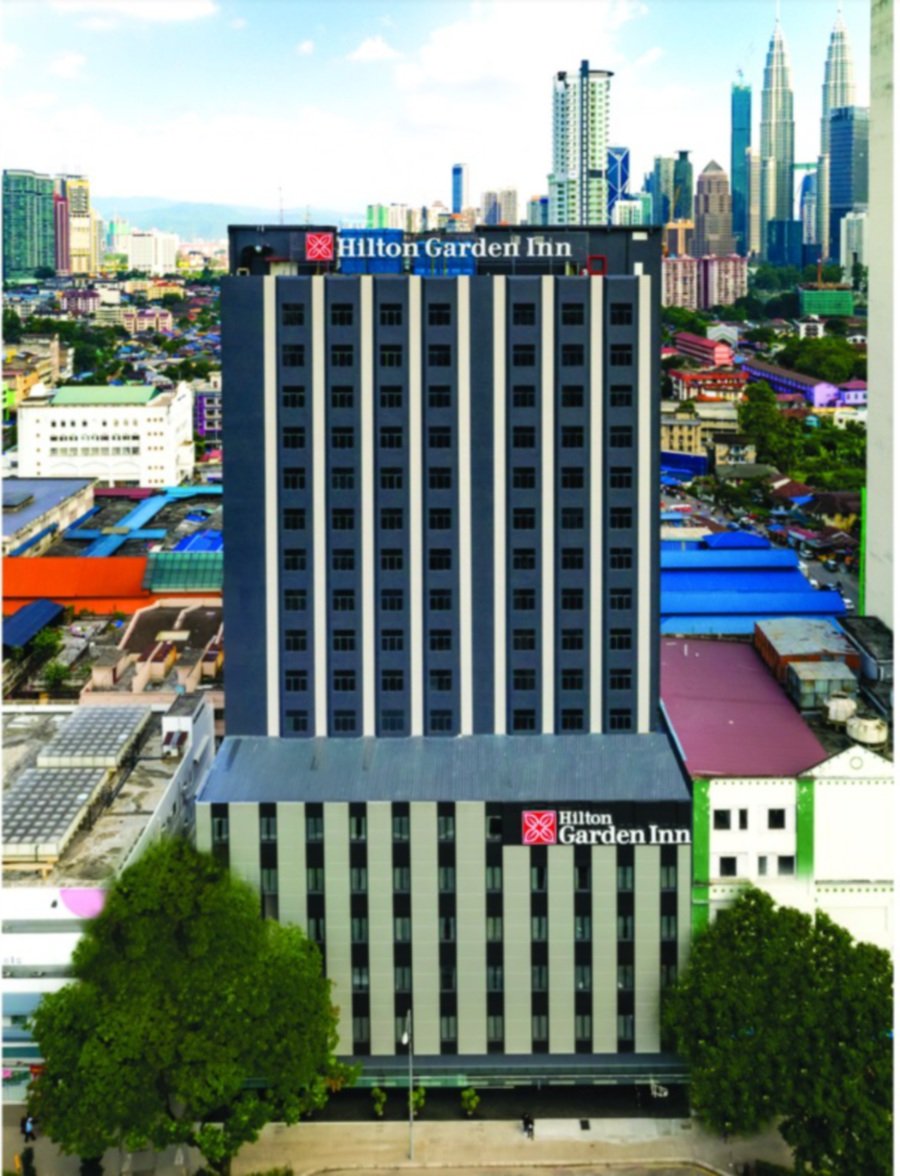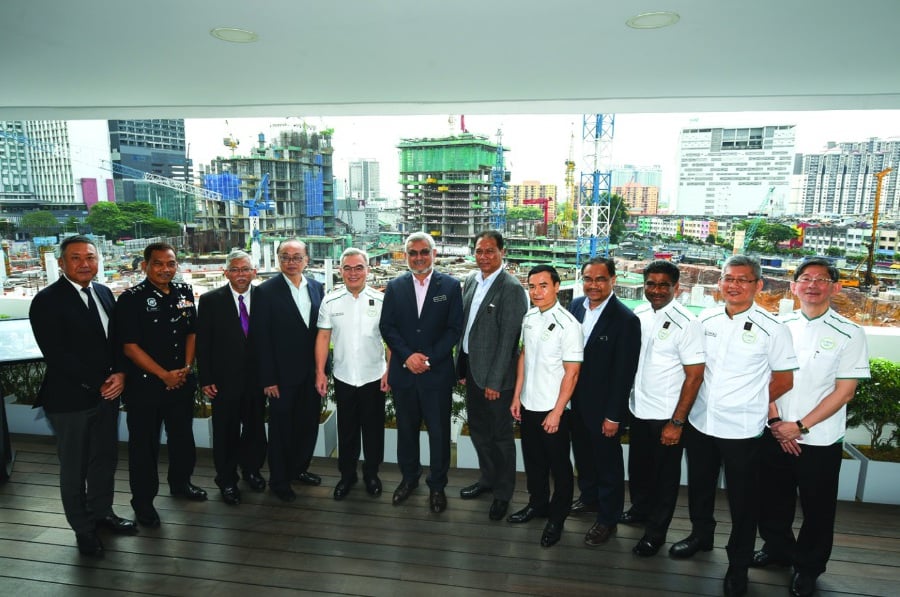Suitor for UEM Sunrise?
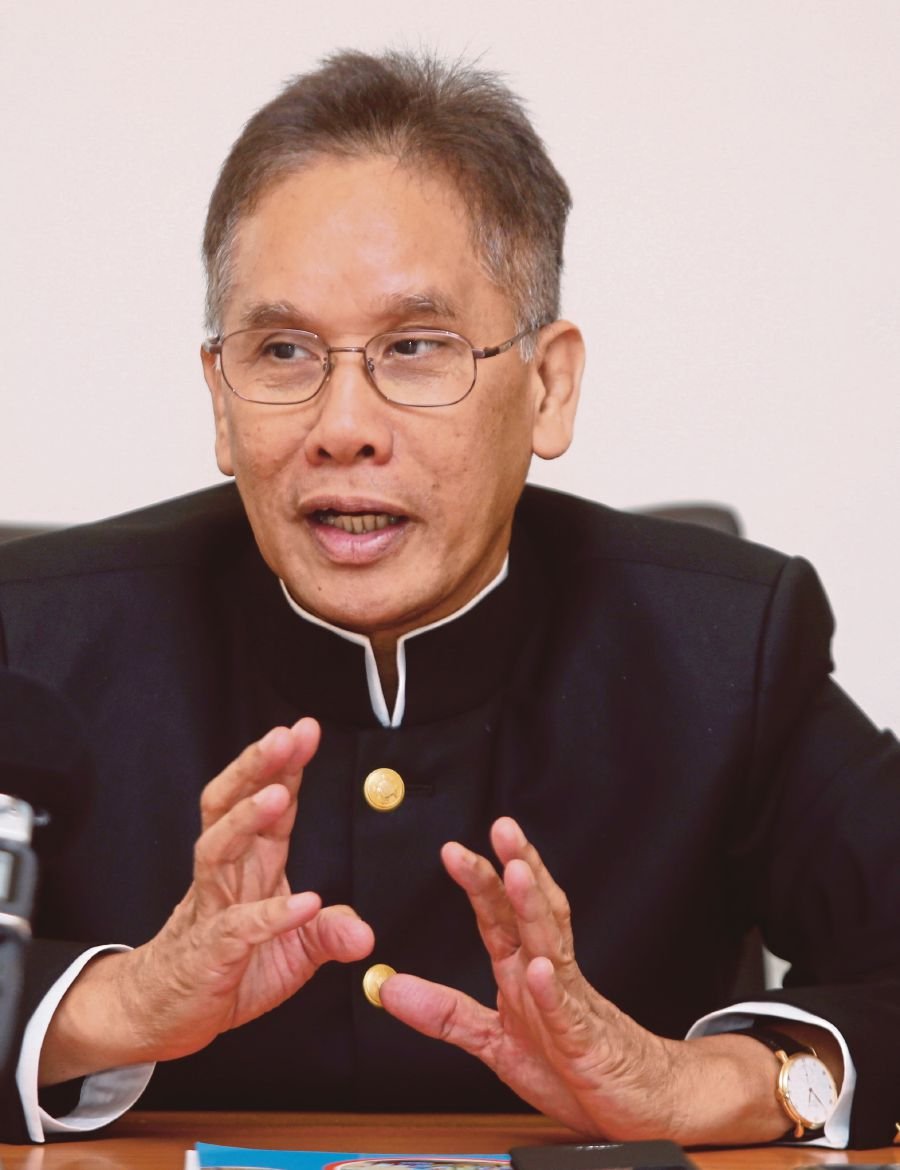
(File
pix) NST Business understands that Tan Sri Halim Saad, who was The New
Straits Times Press (M) Bhd chief executive officer (CEO) in the early
1980s, may be eyeing more than 30 per cent stake in UEM Sunrise, sources
said.
KUALA
LUMPUR: Tan Sri Halim Saad, former executive chairman of Renong Bhd
(now UEM Group Bhd), is believed to be making an offer to buy Khazanah
Nasional Bhd's stake in UEM Sunrise Bhd that could trigger a mandatory
general offer (MGO).
NST Business understands that Halim, who was The New Straits Times Press (M) Bhd chief executive officer (CEO) in the early 1980s, may be eyeing more than 30 per cent stake in UEM Sunrise, sources said.
An up to 33 per cent stake would cost Halim about RM973.5 million. This is based on the company's current market capitalisation (market cap) of RM2.95 billion.
UEM Sunrise closed 0.79 per cent or half a sen lower at 62.5 sen with a small volume of 365,600 shares traded yesterday.
Khazanah has about 66 per cent interest in the property developer. Tabung Haji, which is the only other substantial shareholder in UEM Sunrise, owns 7.75 per cent.
UEM Sunrise CEO Anwar Syahrin Abdul Ajib, when contacted, said he was not in the position to comment on the matter.
"All i can say is that we are committed to managing the business to the best of our ability especially within this tough environment," Anwar Syahrin told NST Business.
It has been reported that Khazanah was looking to divest its stake in UEM Sunrise and had been looking for a suitor.
Property analysts are not surprised that Halim is the potential suitor as rumours have been rife that he was eyeing to take control of UEM Sunrise.
"I think it would be fantastic if Halim takes over UEM Sunrise. It’s nothing like getting an entrepreneur who built Renong and UEM during their heydays. Halim likes de-listing and re-listing. He may take UEM Sunrise private, add value after a major restructuring, and re-list the company," said a property analyst.
Halim has over 20 years of experience in managing conglomerates with diverse interests principally in buildings construction, highways and bridges construction, tolled road operations, light rail transport development, new township planning and development, telecommunication, production and distribution of cement, trading of pharmaceutical products and hotel management.
He headed Renong until June 2001 when it was taken over by Khazanah on the grounds that the group had too much debt and posed a systemic risk to the banking system.
Halim also had a put option amounting to RM2.3 billion owing to the shareholders of UEM in relation to a block of Renong shares.
Before the takeover, Renong went through a restructuring in 1999 under the Corporate Debt Restructuring Committee.
As part of the restructuring, PLUS Expressways Bhd, which was a subsidiary of UEM then, had issued bonds to the tune of RM8.4 billion. PLUS then lent the money to Renong and UEM to settle the creditors.
Halim had served as an executive vice chairman of UEM Builders Bhd, PLUS Bhd, Kinta Kellas Bhd and Faber Group Bhd, and CEO of Seloga Holdings Bhd.
The property analyst believes that Halim could buy up to 33 per cent stake or all of Khazanah's interest in UEM Sunrise.
"He is cash rich so he may even take a 51 per cent stake in UEM Sunrise that will cost him a whopping RM1.5 billion, based on today's market cap. But I don't think Khazanah will dispose off its shares in UEM Sunrise based on market cap. UEM Sunrise's share price has been dropping, making the company cheap but it has assets that are valuable. Khazanah may sell its stake in between the NTA and market cap and may also retain some shares for investment.
"However, UEM Sunrise's debt level is increasing. With the current position of UEM Sunrise, I don’t think Khazanah will sell the company at a higher price. The property market is also not stable, hence why Khazanah has not been able to fetch a higher price for the company," said the analyst.
UEM Sunrise's fiscal year 2017 annual report shows that it has 9,816.9 acres in Johor, about 600 acres (potential GDV of RM14.8 billion) in Kuala Lumpur, Selangor and Negri Sembilan, 2,405 acres in Tapah, Perak, and pockets of land in Melbourne, Australia, and Durban in South Africa.
The land held for property development is valued at RM4.93 billion.
As at end-September, UEM Sunrise's net asset per share was RM1.56, or more than double its share price.
For the nine months ended September, UEM Sunrise posted a net profit of RM260.25 million on revenues of RM1.29 billion, up by over 66 per cent compared to the previous corresponding period.
Earnings per share for the same period was at 5.56 sen.
UEM Sunrise recorded higher operating profit for the cumulative period compared with the preceding year's due to significantly higher contribution from land sales in Iskandar Puteri with its lower cost base, higher contribution from development cost savings for projects and lower operating expenses.
NST Business understands that Halim, who was The New Straits Times Press (M) Bhd chief executive officer (CEO) in the early 1980s, may be eyeing more than 30 per cent stake in UEM Sunrise, sources said.
An up to 33 per cent stake would cost Halim about RM973.5 million. This is based on the company's current market capitalisation (market cap) of RM2.95 billion.
UEM Sunrise closed 0.79 per cent or half a sen lower at 62.5 sen with a small volume of 365,600 shares traded yesterday.
Khazanah has about 66 per cent interest in the property developer. Tabung Haji, which is the only other substantial shareholder in UEM Sunrise, owns 7.75 per cent.
UEM Sunrise CEO Anwar Syahrin Abdul Ajib, when contacted, said he was not in the position to comment on the matter.
"All i can say is that we are committed to managing the business to the best of our ability especially within this tough environment," Anwar Syahrin told NST Business.
It has been reported that Khazanah was looking to divest its stake in UEM Sunrise and had been looking for a suitor.
Property analysts are not surprised that Halim is the potential suitor as rumours have been rife that he was eyeing to take control of UEM Sunrise.
"I think it would be fantastic if Halim takes over UEM Sunrise. It’s nothing like getting an entrepreneur who built Renong and UEM during their heydays. Halim likes de-listing and re-listing. He may take UEM Sunrise private, add value after a major restructuring, and re-list the company," said a property analyst.
Halim has over 20 years of experience in managing conglomerates with diverse interests principally in buildings construction, highways and bridges construction, tolled road operations, light rail transport development, new township planning and development, telecommunication, production and distribution of cement, trading of pharmaceutical products and hotel management.
He headed Renong until June 2001 when it was taken over by Khazanah on the grounds that the group had too much debt and posed a systemic risk to the banking system.
Halim also had a put option amounting to RM2.3 billion owing to the shareholders of UEM in relation to a block of Renong shares.
Before the takeover, Renong went through a restructuring in 1999 under the Corporate Debt Restructuring Committee.
As part of the restructuring, PLUS Expressways Bhd, which was a subsidiary of UEM then, had issued bonds to the tune of RM8.4 billion. PLUS then lent the money to Renong and UEM to settle the creditors.
Halim had served as an executive vice chairman of UEM Builders Bhd, PLUS Bhd, Kinta Kellas Bhd and Faber Group Bhd, and CEO of Seloga Holdings Bhd.
The property analyst believes that Halim could buy up to 33 per cent stake or all of Khazanah's interest in UEM Sunrise.
"He is cash rich so he may even take a 51 per cent stake in UEM Sunrise that will cost him a whopping RM1.5 billion, based on today's market cap. But I don't think Khazanah will dispose off its shares in UEM Sunrise based on market cap. UEM Sunrise's share price has been dropping, making the company cheap but it has assets that are valuable. Khazanah may sell its stake in between the NTA and market cap and may also retain some shares for investment.
"However, UEM Sunrise's debt level is increasing. With the current position of UEM Sunrise, I don’t think Khazanah will sell the company at a higher price. The property market is also not stable, hence why Khazanah has not been able to fetch a higher price for the company," said the analyst.
UEM Sunrise's fiscal year 2017 annual report shows that it has 9,816.9 acres in Johor, about 600 acres (potential GDV of RM14.8 billion) in Kuala Lumpur, Selangor and Negri Sembilan, 2,405 acres in Tapah, Perak, and pockets of land in Melbourne, Australia, and Durban in South Africa.
The land held for property development is valued at RM4.93 billion.
As at end-September, UEM Sunrise's net asset per share was RM1.56, or more than double its share price.
For the nine months ended September, UEM Sunrise posted a net profit of RM260.25 million on revenues of RM1.29 billion, up by over 66 per cent compared to the previous corresponding period.
Earnings per share for the same period was at 5.56 sen.
UEM Sunrise recorded higher operating profit for the cumulative period compared with the preceding year's due to significantly higher contribution from land sales in Iskandar Puteri with its lower cost base, higher contribution from development cost savings for projects and lower operating expenses.

